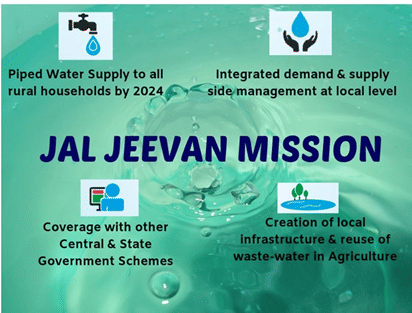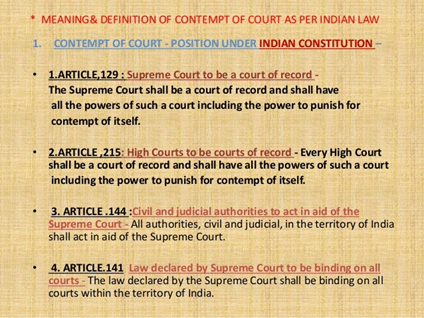17 August 2020: The Hindu Editorial Analysis | Additional Study Material for UPSC PDF Download

1. LAPSING INTO CONTEMPT: ON PUNISHING PRASHANT BHUSHAN
GS 2- Important aspects of governance, transparency and accountability
Context
(i) The Supreme Court’s order finding advocate Prashant Bhushan guilty of contempt of court reflects poorly on the institution’s tolerance of criticism.
(ii) The judgment of a three-judge Bench on the suo motu(by self) contempt proceedings against Mr. Bhushan hardly adds to the dignity and majesty of the Court that it ostensibly(apparently) sets out to uphold.

Unwarranted Rebuke
(i) It is unfortunate that two tweets, and not any set of scandalous(disrepute) or scurrilous(abusive) allegations, have occasioned this heavy-handed treatment.
(ii) Nothing in the tweets amount to criminal contempt(offence).
(iii) The first tweet involved an image of Chief Justice of India in an informal setting has been used to make a critical remark that he was denying citizens recourse to justice for fundamental rights violations.
(iv) However, it is quite a stretch(exaggeration) to say that it undermines the Court’s dignity, lowers its authority or interferes with the administration of justice.
(v) At best, it touches partially on the CJI’s personal conduct and partially on his administrative decision-making.
(vi) Neither part brings with it any exceptional malice(harm) or scurrility warranting action for criminal contempt.
(vii) It is precisely this sort of criticism that the judiciary ought to be able to shrug off(ignore).
Executive Influence
(i) The second tweet, in which Mr. Bhushan has blamed the Court, more particularly, the last four CJIs, for “the destruction of democracy” in the last six years, “even without a formal Emergency”, requires no defence.
(ii) It is clearly in the nature of a political opinion, be it with reference to the working of the institution or the four personages who headed the judiciary during the period.
(iii) It is difficult to agree that the mere voicing of an opinion that successive CJIs have destroyed democracy would undermine public trust in the judiciary.
(iv) Mr. Bhushan’s abrasive animadversion(criticism) of judicial conduct is no more discordant than a former CJI being accused by his colleagues of being under executive influence, or misusing his powers as master of the roster with a view to obtaining favourable outcomes.
(v) There is some inadvertent irony in the Court’s claim that allowing Mr. Bhushan’s remarks to go unpunished would lower the country’s image in the comity(association) of nations.
Conclusion
(i) The highest court built its stalwart fame on stellar judgments and record of fearless independence.
(ii) If at all it falls in the estimation of the world now, it may only be because of a growing perception of judicial evasion(escape), self-imposed reticence and quiet acquiescence(conscent) in the face of executive power.
(iii) Finding Prashant Bhushan guilty of contempt reflects a low threshold for criticism.
2. BIG GOALS: ON NARENDRA MODI’S SEVENTH INDEPENDENCE DAY SPEECH
GS 2- Important aspects of governance, transparency and accountability
Context
Prime Minister’s speech on the 74th Independence Day — his seventh consecutive one — on Saturday sought to reassure the nation on the twin challenges of the COVID-19 pandemic and external aggression. Outlining Priorities
Outlining Priorities
(i) The very fact that he mentioned menstrual hygiene will encourage health workers to be more attentive to the issue and create more awareness.
(ii) Sanitation and access to drinking water have been issues dear to Mr. Modi’s heart, and the speech reflected that.
(iii) The Jal Jeevan Mission that seeks to provide piped drinking water to every home, along with the expanding networks of electricity, the Internet, banking and cooking gas, will equip India to rise higher.
(iv) Slogans such as self-reliance, “vocal for local”, “make in India to make for the world” are just old rhetoric for a new occasion, but their reiteration could spur the state apparatus into action, besides galvanising opinion.
(v) Mr. Modi has been an exceptional user of the I-Day pulpit(platform) to outline priorities, and deserves credit for it.
(vi) While celebrating the nation’s milestones, the massive challenges of governance and development must not be glossed(covered-up) over.
Camouflage Won’t Help
(i) Announcing new schemes that do not resolve, but camouflage(hide), these challenges are of little help.
(ii) The PM promised to bring a revolution, as the National Digital Health Mission, which will give every Indian a digital health ID that links up all her medical records.
(iii) But the real issue is the abject lack of primary health facilities in much of India.
(iv) Digitalisation is welcome but is no substitute for inadequate human resources and infrastructure in the health sector.
(v) Mr. Modi also reiterated his vision for India in relation to the world, a tightrope walk of promoting import substitution on the one hand and seeking global partnerships on the other.
(vi) The challenges in managing such an approach were apparent when he mentioned India’s successes in attracting FDI and talked about self-reliance in manufacturing PPEs in the same breath.
(vii) He did mention ‘Vasudhaiva Kutumbakam’ as India’s guiding principle, but his characterisation of its centuries-old interactions with other populations and cultures appeared more in line with his Hindutva politics than with the spirit of the freedom struggle.
(viii) The construction of the Ram temple in Ayodhya now has the support of most political parties and is on the basis of a Supreme Court judgment, but its mention did not address concerns regarding what it portends(signals) for India’s future.
Conclusion
(i) Ambitious collective goals can inspire a community, which must be increasingly inclusive as it progresses.
(ii) Triumphs that are not equally shared are no triumphs at all.
3. THE COST OF STIFLING VOICES
GS 2- Important aspects of governance, transparency and accountability
Context
(i) Ethical explorations often begin with emotional injury. Something simply feels wrong, and you ask yourself whether you are missing an important bit of information or the right perspective.
(ii) Supreme Court judgment pronouncing senior lawyer Prashant Bhushan guilty of criminal contempt for his two “scurrilous(abusive)” tweets.
(iii) How could Mr. Bhushan be accused of malice against the system? How did we get here?
(iv) The court took a position on an important ethical question: Do we strengthen or weaken institutions by criticising some of the actions of those holding public office?
(v) The judgment sets a worrying precedent(example) and affects all of us who raise our voices within public institutions and hope to improve them.
Exit and Voice
(i) A Scholar contrasts Exit and Voice as two alternative mechanisms for the repair of societal institutions.
(ii) When consumers switch from one firm to another, an employee moves to a job with better working conditions or a family moves across neighbourhoods, they are all exercising exit.
(iii) When a partner in a marriage complains of abuse, or workers protest against management action, it is voice. Exit and voice work together.
(iv) Without any possibility of exit, voices would remain unheard, and if exit were too easy, very few would invest in voice.
(v) Public health and education work best in countries where they are inclusive. When the wealthy and most educated exit to private providers, public systems are often starved of resources and ideas.
(vi) In politics, exit is used at the time of elections, while voice makes incumbents accountable.
(vii) Judicial initiative, often in response to public interest litigation, has led to many progressive decisions over the last two decades.
(viii) These include the Supreme Court’s order that free meals should be provided for all schoolchildren in public primary schools.
(ix) Scrutinising(examining) the behaviour of the legislative and executive arms of government did not lower the dignity associated with those offices or undermine democracy.
(x) On the contrary, it improved their functioning. Moreover, such scrutiny relied on critical voices from the field.
(xi) Social activists pointed to growing grain stocks with the Food Corporation of India which could be used to eliminate(end) child hunger.
Strengthening Institutions
(i) Courts exist to promote justice by adjudicating on disagreements.
(ii) The judiciary relies on listening to testimonies(proof) and deciphering(decode) them to extract evidence. The many voices they hear are rarely non-partisan.
(iii) They are muffled(muted), broken, acrimonious(bitter), vengeful, disingenuous, arrogant, self-righteous and many other things.
(iv) Yet judges know, better than anyone else, that good jurisprudence relies on listening to all of these and separating the wheat from the chaff.
(v) If they were to restrict themselves to the cool and candid, the result would often be silence.
(vi) Most of us do not speak when we are calm, we enjoy the feeling while it lasts.
Conclusion
(i) Voice has the potential to strengthen institutions and help them adapt to a changing environment.
(ii) Deliberation and debate are needed if we are to pool information, negotiate our differences, and make better collective decisions.
(iii) In stifling(restricting) voice, we risk the disengagement of those who are most invested in preserving our democratic institutions.
|
21 videos|562 docs|160 tests
|
FAQs on 17 August 2020: The Hindu Editorial Analysis - Additional Study Material for UPSC
| 1. What is the significance of The Hindu Editorial Analysis for UPSC exam preparation? |  |
| 2. How can The Hindu Editorial Analysis help in improving my language skills for the UPSC exam? |  |
| 3. Is The Hindu Editorial Analysis relevant for other competitive exams apart from UPSC? |  |
| 4. How can I make the most of The Hindu Editorial Analysis for my UPSC exam preparation? |  |
| 5. Can I solely rely on The Hindu Editorial Analysis for my UPSC exam preparation? |  |
















